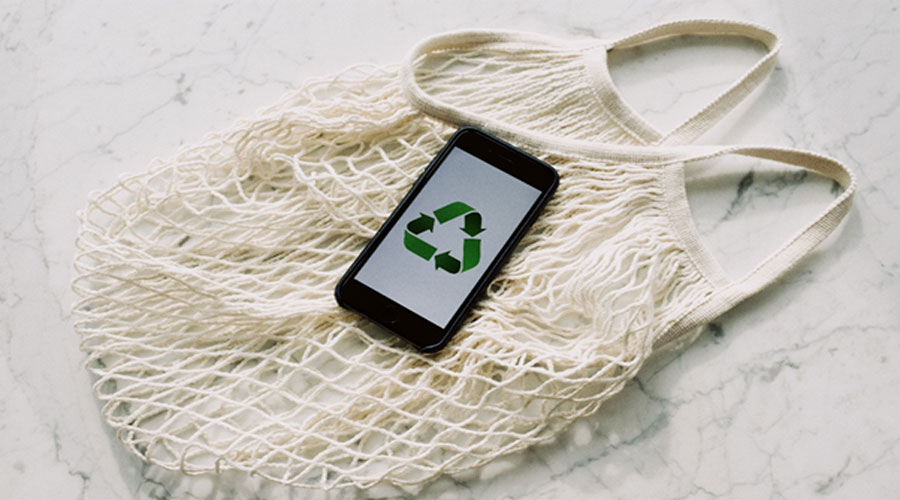5 Must-Have Green Marketing Strategies for 2022 and Beyond
Originally published: April 17, 2022 12:30:58 PM, updated: November 19, 2022 12:00:00 AM

Recent studies have shown that up to 80 percent of all consumers are interested in green marketing strategies. Of course, this is partly because more individuals are aware of their roles in tackling serious pollution and climate change issues.
Therefore, companies must learn to appreciate some of the most powerful approaches to adopt when advertising their products and services. Let's look at five effective green marketing strategies that your business can implement and look at the advantages of each.
Green Marketing at a Glance
Before delving into the different approaches that can be taken when developing a successful strategy, it is wise to briefly define green marketing from a broader perspective to understand what it means.
Green marketing is primarily concerned with the development, advertising, and dissemination of products (or services) that have been designed to have a minimal impact on the environment. Note that the phrase "sustainable marketing" encompasses these same principles.
As customers are becoming more aware of their impact on the world, it only stands to reason that green marketing is expected to enjoy a great deal of popularity in the future. The main driving force behind this trend involves the growing importance of corporate responsibility and transparency. Organizations can be called out for so-called 'greenwashing' tactics. Therefore your attempt at green marketing must be sincere and transparent.
1. The Development of Sustainable Products and Services

Perhaps the most common way to adopt a green marketing approach involves focusing on the types of products and services being offered. As the term already suggests, these items should be aligned with an overall sustainable approach. This is why many startup ventures are focusing more on metrics such as eco-friendly designs, lower carbon footprints, and products that have been engineered to last for extended periods.
The main result of these efforts is that fewer resources will be used during the manufacturing process. Customers can also benefit from the fact that they will be purchasing goods or services that will not expire and enter back into the environment (such as often occurs with items such as plastic bottles and alkaline batteries). This is an excellent selling point, and as a result, the company will enjoy a positive brand identity.
2. Targeting Environmentally Aware Consumers
Demographics are another key facet of any well-implemented green marketing campaign. This is only logical, as it makes little sense to target an audience base that is not interested in sustainability. The main question here involves what type of consumer will be the most attracted to such an approach. This is once again when a bit of research can go a long way. Here are some interesting observations compiled by a reputable think tank:
- Most green consumers classify themselves as being in the middle class.
- These individuals tend to represent the younger generation (millennials in particular).
- This demographic is often willing to pay slightly more for products that have been responsibly engineered.
- They place a great deal of emphasis upon transparency, value, and corporate compliance.
These are sometimes called "LOHAS" (Lifestyle and Health and Sustainability) consumers. Most industry experts predict that the proportion of these individuals is set to massively increase in the coming years, so it makes sense to appeal to their needs sooner as opposed to later.
3. Motion and Emotion
Green marketing should not represent static efforts. On the contrary, they need to be associated with a sense of action. This is one of the core tenets of contemporary marketing in general. Unfortunately, some professionals have yet to appreciate the importance of such an approach. An example will help to cement this point.
Let's imagine that a company has begun promoting EV charger installation services for a moment. While the concept itself may appear to be quite attractive to consumers who currently own or are looking to invest in an EV, it will be of little value if the firm fails to adopt a more action-oriented approach. For instance, it can highlight the impact of greenhouse gases from traditional fuel types while donating a portion of its sales to environmental clean-up efforts.
Consumers are no longer satisfied with empty promises. It can be argued that these strategies died out in the latter half of the 20th century. They now want to see evidence that a company truly cares about sustainable approaches. Not only must proactive strategies be embraced, but these should be concisely communicated to the end-user. Otherwise, even the most innovative green marketing campaigns may fall upon deaf ears.
4. Product Transparency

One of the issues that have hampered green marketing efforts in the past involved the products themselves instead of the advertising campaigns. Let's imagine for a moment that an item claims to contain environmentally friendly ingredients. However, consumers quickly learn that it is partially comprised of artificial dyes and fillers. This will present a very real issue, as any future statements issued by the firm will be much harder to trust. Here are some questions which can help to avoid such a scenario:
- What are the origins of the product?
- What type of labor is involved during the manufacturing process?
- Where is this labor sourced?
- Are efficient transportation methods used?
Marketers must make it a point to clearly highlight any environmental benefits that the product has to offer. These can be further reinforced by using authoritative studies and/or website hyperlinks that lead to reputable sources. Simply making promises is no longer sufficient. Educated demographics require proof as opposed to nothing more than clever slogans and tag lines.
Let us also remember that recycling is equally essential. If the product happens to be made from recycled materials, this should permanently be embedded within the overall marketing campaign.
5. Green Forms of Packaging

Recently, a great deal of emphasis has been placed on e-commerce SEO, and this is certainly no accident. The online retail community is growing rapidly, and it is currently worth billions of dollars. However, we need to recall that any product will eventually have to be shipped to the end-user. This is when the power of green packaging comes into play.
The use of eco-friendly packaging materials (such as recycled cardboard and biodegradable plastics) has become commonplace. This once again illustrates that the company itself is committed to sustainability. Another ancillary benefit here is that green packaging may actually be able to reduce standard shipping and logistical costs. These savings can thereafter be passed on to the customer, enabling them to obtain quality services at competitive prices.
Green Today for a Brighter Tomorrow
To put all of the observations mentioned above into perspective, a 2020 survey concluded that 45 percent of all consumers would be willing to switch to a new company if it was associated with sustainable products. In other words, there is no doubt that green marketing is the way of the future.
The environmental impacts of such approaches have become clear, and the average customer wishes to become part of the solution. Thankfully, the techniques previously highlighted are relatively easy to implement, and their impacts will be felt within short periods. Going green has never made more sense than at present.
Join over 130,000 SEO and Google Ads experts. We provide a community to help you engage and learn from industry experts and influencers. Join Now
What if your entire business could run itself — and your work hours got shorter?